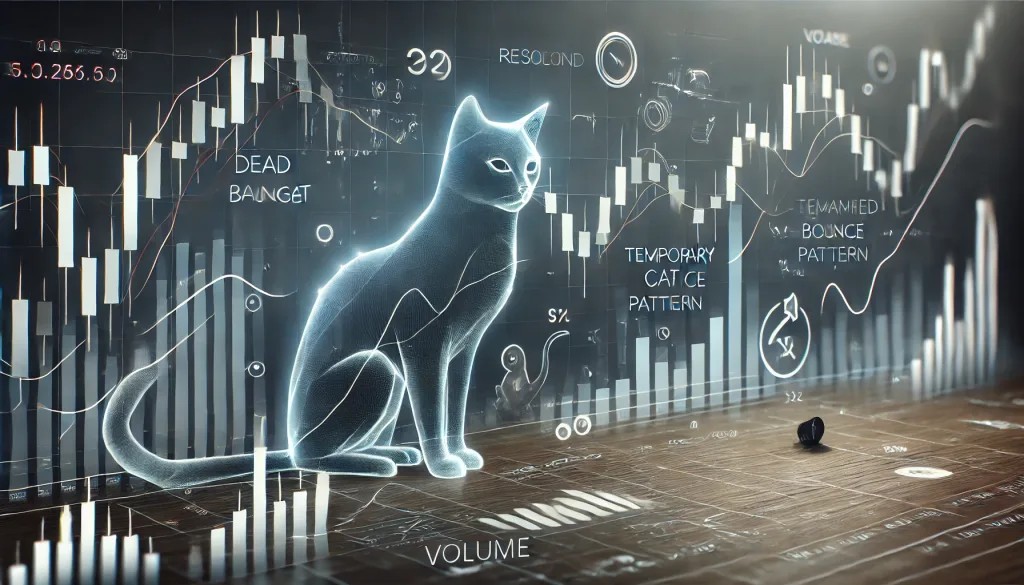Master the Dead Cat Bounce on the Weekly Timeframe

Weekly Timeframe Meets the Dead Cat Bounce: Your Expert Playbook
In Forex trading, the weekly timeframe is where patience meets profitability. Add the infamous “dead cat bounce” into the mix, and you’ve got a strategy that’s as intriguing as it is profitable—when used correctly. Let’s explore how to leverage these elements, sidestep common pitfalls, and capitalize on opportunities others miss. Along the way, we’ll sprinkle in humor to keep things engaging.
Why the Weekly Timeframe Deserves Your Attention
The weekly timeframe is like the wise old owl of Forex trading. It offers:
- Clarity: Weekly charts filter out intraday noise, providing a clear picture of trends.
- Strategic Entry Points: Identifying major support and resistance levels is easier.
- Reduced Emotional Trading: Fewer trades mean less stress.
By focusing on the bigger picture, you’re less likely to get caught up in short-term volatility.
The Dead Cat Bounce: What It Is (and Why It Matters)
Despite its morbid name, the dead cat bounce is a fascinating pattern. It occurs when a brief recovery in a downtrend tricks traders into thinking a reversal is underway. Think of it as the market’s equivalent of false hope. Here’s what it looks like:
- Steep Downtrend: A sharp decline in price.
- Temporary Rebound: A short-lived recovery that doesn’t break key resistance levels.
- Continuation: The downtrend resumes, often with renewed vigor.
Why Pair the Weekly Timeframe with the Dead Cat Bounce?
Combining the weekly timeframe with the dead cat bounce allows you to:
- Spot false reversals with greater accuracy.
- Plan long-term trades with higher reward-to-risk ratios.
- Avoid emotional decision-making during short-term recoveries.
How to Trade the Dead Cat Bounce on the Weekly Timeframe
Here’s a step-by-step guide:
- Identify a Strong Downtrend: Use the weekly chart to confirm a sustained decline.
- Watch for a Rebound: Look for a temporary price recovery that doesn’t break major resistance levels.
- Volume Analysis: Ensure the rebound has lower volume compared to the preceding downtrend.
- Confirmation: Wait for the price to resume its decline and break below the rebound low.
- Entry Point: Enter short just below the rebound low.
- Stop-Loss Placement: Place a stop-loss above the rebound high to limit risk.
- Take Profit: Use Fibonacci extensions or prior support levels to set profit targets.
Real-Life Example: Learning from the Market
Consider the EUR/USD pair during a global economic downturn. After weeks of decline, the pair rebounded slightly, forming a classic dead cat bounce. Traders who recognized the pattern entered short at 1.1000, placed a stop-loss at 1.1100, and took profit at 1.0800. The result? A clean 2:1 reward-to-risk ratio.
Advanced Insights: Beyond the Basics
- Multi-Timeframe Analysis: Confirm the dead cat bounce on both weekly and daily charts for stronger validation.
- Correlation Analysis: Monitor related currency pairs for similar patterns.
- Economic Indicators: Watch for macroeconomic data, such as interest rate decisions or employment reports, to support your analysis.
Common Mistakes and How to Avoid Them
Myth 1: All rebounds are dead cat bounces. Truth: Many rebounds are genuine reversals. Confirm with volume and resistance levels.
Myth 2: Short-term charts work just as well. Truth: The weekly timeframe offers a clearer view of long-term trends.
Myth 3: You can skip stop-losses. Truth: Every trade needs a safety net. No exceptions.
Risk Management: Protect Your Capital
Follow the 2% rule: Never risk more than 2% of your account on a single trade. Use a trailing stop to secure profits if the trend moves in your favor.
Trading the dead cat bounce on the weekly timeframe is a strategy that rewards patience and discipline. By combining technical precision with fundamental insights, you can turn false hope into real profits. Remember, success in Forex trading isn’t about predicting the market—it’s about preparing for every outcome.
—————–
Image Credits: Cover image at the top is AI-generated
PLEASE NOTE: This is not trading advice. It is educational content. Markets are influenced by numerous factors, and their reactions can vary each time.

Anne Durrell & Mo
About the Author
Anne Durrell (aka Anne Abouzeid), a former teacher, has a unique talent for transforming complex Forex concepts into something easy, accessible, and even fun. With a blend of humor and in-depth market insight, Anne makes learning about Forex both enlightening and entertaining. She began her trading journey alongside her husband, Mohamed Abouzeid, and they have now been trading full-time for over 12 years.
Anne loves writing and sharing her expertise. For those new to trading, she provides a variety of free forex courses on StarseedFX. If you enjoy the content and want to support her work, consider joining The StarseedFX Community, where you will get daily market insights and trading alerts.
Share This Articles
Recent Articles
The GBP/NZD Magic Trick: How Genetic Algorithms Can Transform Your Forex Strategy
The British Pound-New Zealand Dollar: Genetic Algorithms and the Hidden Forces Shaping Currency Pairs
Chande Momentum Oscillator Hack for AUD/JPY
The Forgotten Momentum Trick That’s Quietly Dominating AUD/JPY Why Most Traders Miss the Signal
Bearish Market Hack HFT Firms Hope You’ll Never Learn
The One Bearish Market Hack High Frequency Traders Don't Want You to Know The

